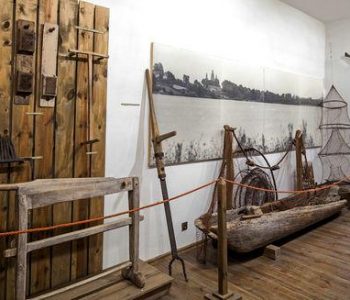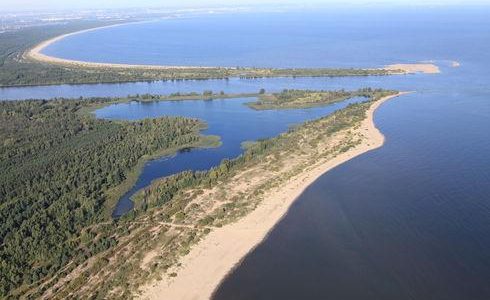The reserve protects the remains of a Goth burial ground from ca. 2nd Century A.D. Within the pine forest, there are ten complete circles and two fragments. The smallest of these has a diameter of 15 metres, and the largest is 33 metres in extent. Each features from 16 to 29 stones cropping out from the earth from 20 to 70 cm. All circles have one or two stones at their centres. Aside from the circles, the reserve also has about 30 burial mounds, with diameters ranging from 8 to 12 metres. The circles and burial mounds hold over 600 discovered burials. During archaeological research , traditional ornaments and Roman ceramics were found in the graves. The Goths are believed to have arrived in this land during the eighth decade of the first Century, when the Roman Empire had great influence and power. The Goths probably remained here for about 150 years. Burials in this culture involved the said burial mounds with a stone embankment, the stone circles, as well as a flattened area of the burial ground, where all graves were originally marked with stelae (flat, vertical slabs).
The route through the burial ground is marked with arrows. As we walk it, we encounter burial mounds and circles, and a one-of-a-kind crater in the ground, which according to Goth beliefs, was a passage to the depths of the other world. The human remains found here were probably not considered fit for traditional burial.
The stone circles are also of natural value. Naturalists discovered more than 40 species of lichen, as well as 6 species of moss on the stones and burial mounds. These glacial erratics are home to several-hundred-year-old lichens characterised by slow growth. Their age is determined on the basis of the size of the thallus, comparing it to the data about its yearly growth. An interesting phenomenon is the presence of species characteristic of the highest mountain levels and never encountered on the plains. Scientists marked some of these as having existed in the early ice age.
The reserve is also a venue for cultural events connected with the Goth culture. September is the special month for this, when the beautiful heaths growing here add mysticism to the scene. At this time, visitors can partake of wonderful meals, learn the craft of clay pottery and watch a show of Goth fashion, all this to the sounds of Celtic music.
The reserve fulfils touristic and educational functions. It is fully open to visitors and features trails marked with information boards.
Kamienne Kręgi Reserve is located about 14 km north of Czersk and 1.5 km away from the Odra village, which features a branch of the Chojnice Archaeological Museum. The area of the reserve is enclosed with a wooden fence, and can be accessed only through the entrance gate. It is definitely the most accessible and frequently visited of all reserves in the District. Opening hours: during the season Monday – Friday 10:00 a.m. – 5:00 p.m., Saturday, Sunday and Holidays 11:00 a.m. – 7:00 p.m. (organised groups after prior arrangement). The reserve’s curator is Zofia Breske, tel. 52 398 61 30, 601 336 015. The entry ticket to the reserve costs PLN 4, with 50% discount for school and university students, pensioners and people with disabilities. Entrance is free of charge for children up to 6 years of age, environment protection officers, employees of the Czersk Forest Inspectorate and organised groups led by the employees of the Forest Inspectorate, as well as for researchers holding a permit to conduct scientific research in the area of the reserve.

















